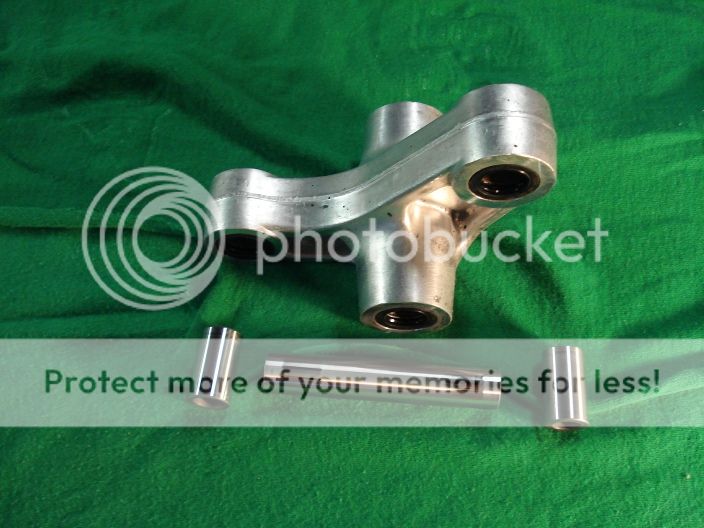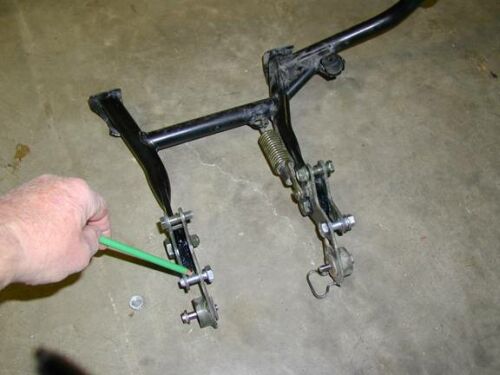I chose yesterday as my rear linkage disassembly and re-lube day. The bike is now 9 years old and has >75k miles on it. The only other time that I had done this maintenance was 2 years ago at 45k miles. The pivots, especially the wider spaced ones at each end of the dog-bones, do tend to get some one-sided wear on them. By that I mean that you will see marks where the needles had been rubbing only on one side of the inner race circumference. That's because these bearings are only required to rotate a few degrees throughout the full articulation of the suspension, so that is the only part of it that is supporting the weight of the bike.
Mine at 75k look pretty much the same as they did at 45k, which is much like the photos posted by wmadoty here. His might have been looking a little worse as my worn spots just looked shiny, not blackened, but that may be a camera artifact. The key thing is that they look the same 30k miles later, and so long as they still rotate smoothly with no signs of corrosion (rust)or other water / salt damage they should be good for another round.
At first maintenance the bearings had the same appearance as in his photo report, very little in the way of lubrication. But I used a generous amount of water resistant, marine wheel bearing grease in there the last time and it was still in good evidence yesterday. So I just cleaned out the old and gobbed on some new. My conclusion is that they just do not use very much grease on these pivots at the factory.
I had picked out the plastic like waxy spacer material the last time, thinking that it was some sort of congealed grease. Those bearings certainly seem no worse for that 30k miles later, so I guess that is a non-issue. Makes more room for some good grease I guess too.
I used the technique described earlier by Donal here to get that frozen spacer out of the upper relay arm pivot frame tab. It worked great, and now that I've cleaned and greased it I'm hoping it comes out a bit easier next time. So, no need to cut or reverse that bolt after all.
But there is no way around removing the center stand if you want to get to that upper front pivot without taking a grinding wheel to it like Queensland Ken described here. And removing the center stand is what makes this job such a PITA. I would seriously consider doing all but that one pivot the next time just so I don't have to remove the center-stand. Evidence seems to support that it is the two ends of the dog bones that get the worst of the wear for some reason. Either that or maybe reducing the side-stand bracket by 50% with a grinder wouldn't be so bad in comparison?
Oh, and I just used the typical black iron pipe stand and two ratchet straps from the sub-frame to the stand to hold the bike up without the center-stand, and the bike didn't even try to take a SkooterG nap. :tonguesmiley:

















































